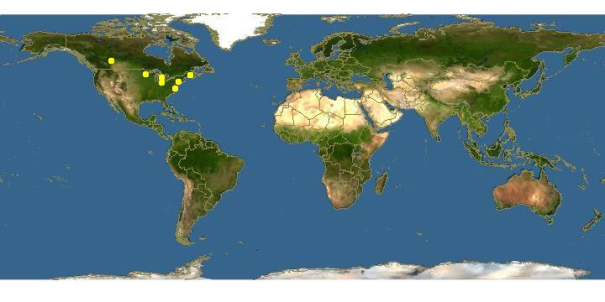
Habitat
Terrestrial snails, such as Euconulus polygyratus, are limited in range by their need for humidity, shelter, and calcium in the soil (Eisenhour et al.2007). Preservation of the habitats of the land snails is crucial for ensuring their existence on earth , as it would be with any other organism. In regards to Euconulus polygyratus specifically, given our inadequate knowledge of its current distribution, it is impossible to know what these issues may be (Nekola 2009). What we do know about Euconulus polygyratus, is that the species, thus far, have only been located in North America, often inhabiting mesic forests (Nekola 2009). A mesic forest is a moderately moist forest. Although Euconulus polygyratus are terrestrial, having moisture in their habitat, seems to heavily influence the success of their existence. In addition to the mesic forest habitat, a study executed by Nekola in 2003, confirmed that of the 55 members of the species observed, 24 were found inhabiting rock outcrop areas. Below is a map of the areas of North America in which Euconulus polygyratus have been observed, indicated by the yellow targets.
In the beginning, molluscs were only found in aquatic habitats. The transition from an aquatic habitat to living on land, would require adaptations. Click on the adaptation link, found on the left side of this page, to learn more about gastropod adaptation.
